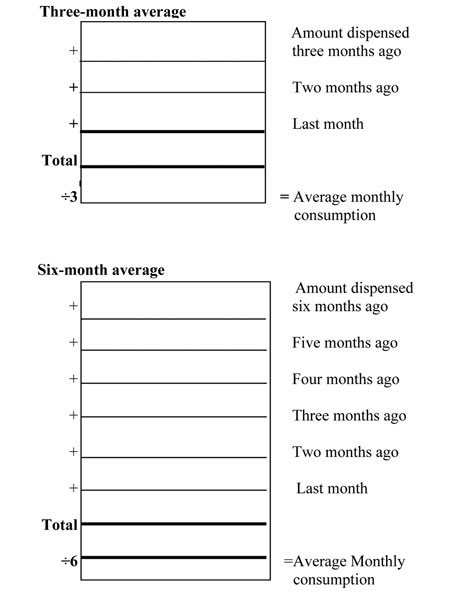2.2.3 Managing contraceptive supply
Record keeping and reporting
Record keeping and reporting is one way that an organisation can keep track of patterns of contraceptive use amongst its clients. Keeping records and preparing and analysing reports are effective ways to determine clients’ needs and their use patterns, without doing a formal programme evaluation. Good examples of this are stock on hand (by method and brand), and consumption/distribution (by method and brand), both of which can be easily collected and analysed on a routine basis. This information can be collected by using simple HMIS records, forms and reports (for details, refer to National HMIS technical guidelines).
HMIS is the Health Management Information System.
Types of recording forms
Inventory control card (ICC): This form should be kept at all storage facilities that manage a significant number of inventory items. The purpose of the ICC is to have an up-to-date and continuous record, in one location, of all transactions for each item in the inventory (refer to HMIS forms).
Daily activity register (DAR): The register is designed to be used when contraceptives are dispensed to family planning clients. It provides a daily log of the number of client visits, subdivided by the types and quantities of contraceptives dispensed to each client on a monthly basis. When a new month begins, service providers should begin a new DAR. The DAR should be totalled on a monthly and quarterly basis (refer to HMIS forms).
Quarterly report/requisition: This form serves several purposes. It provides summary information from the DAR and ICC concerning the number and types of clients served, and quantities of each type of contraceptive received and dispensed over a three-month period (refer to HMIS forms).
Inventory control system
The average monthly consumption (AMC) is equivalent to one month’s supply. It is usually the monthly average of the quantity of that product that has been dispensed to users during the past three or six months. Information on the quantities dispensed is taken from the DAR or summary reports of dispensed-to-user data (see Figure 2.1).

Assessing your supply status
To make sure your supplies are adequate, do the following calculation for each of your contraceptive products:
Stock in hand ÷ AMC (average monthly consumption) = Months of supply in stock
This calculation will tell you how long your current supply will last if consumption stays at the current rate. If the months of supply in your stocks are less than the time remaining before your next delivery of supplies, then you may need to arrange for an emergency delivery (see Table 2.2).
| Product | Stock in hand | ÷ AMC | Months of supply |
|---|---|---|---|
| Lo-femenal combined oral contraceptive | 470 cycles | 180 | 2.6 |
| Ovrette progestin-only oral contraceptive | 320 cycles | 45 | 7.1 |
| Blue & Gold condoms | 1,200 condoms | 420 | 2.9 |
| Depo-Provera (DMPA) | 520 vials | 92 | 5.7 |
Look at Table 2.2. Your next delivery of supplies is in 3 months. Are there any contraceptive products you need to arrange an emergency delivery for?
Lo-femenal combined oral contraceptive and Blue & Gold condoms may run out before your next delivery, so you need to place an order to replenish your stock of these two products as soon as possible.
2.2.2 Monitoring and evaluation
